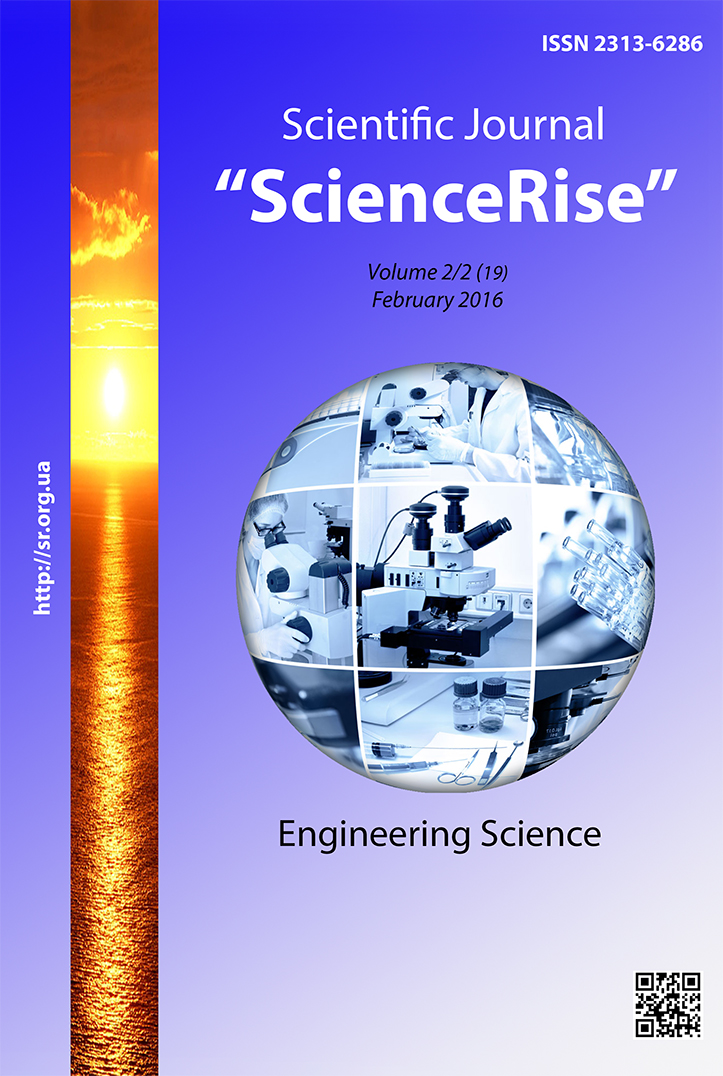Alternative approach to automated management of load flow in engineering networks considering functional reliability
DOI:
https://doi.org/10.15587/2313-8416.2016.59451Keywords:
pipe-line network, functional reliability, consumer of purpose-oriented product, method of reliability calculationAbstract
The approach to automated management of load flow in engineering networks considering functional reliability was proposed in the article. The improvement of the concept of operational and strategic management of load flow in engineering networks was considered. The verbal statement of the problem for thesis research is defined, namely, the problem of development of information technology for exact calculation of the functional reliability of the network, or the risk of short delivery of purpose-oriented product for consumers
References
Abramov, N. N. (1984). Nadezhnost sistem vodosnabzheniya. Moscow: Stroyizdat, 216.
Barlou, R., Proshan, F. (1984). Statisticheskaya teoriya nadezhnosti i ispytaniya na bezotkaznost. Moscow: Nauka, 328.
Belyaev, Yu. K. (1978). Statisticheskie metody v teorii nadezhnosti. Moscow: Znanie, 66.
Ilyin, Yu. A. (1985). Nadyozhnost vodoprovodnykh sooruzhenij i oborudovaniya. Moscow: Stroyizdat, 242.
Evdokimov, A. G., Tevyashev, A. D. (1980). Operativnoe upravlenie potokoraspredeleniem v inzhenernyh setyah. Kharkiv: Vishcha shkola, 144.
Samoilenko, M. I., Kostenko, A. B., Senchuk, T. S. et. al; Samojlenko, N. I. (Ed.) (2009). Adekvatnost modelej funktsionalnoj nadezhnosti truboprovodnykh system. Kharkiv: Izdatelstvo «NTMT», 115.
Gavrilenko, I. A., Manakova, N. O. (2015). Konceptualnye aspekty avtomatizirovannogo upravleniya potokoraspredeleniem v kommunalnyh setyah. Matematicheskoe modelirovanie processov v ehkonomike i upravlenii proektami i programmami (MMP-2015). Kharkiv – Nikolaev, 122–125.
Downloads
Published
Issue
Section
License
Copyright (c) 2016 Ирина Александровна Гавриленко

This work is licensed under a Creative Commons Attribution 4.0 International License.
Our journal abides by the Creative Commons CC BY copyright rights and permissions for open access journals.
Authors, who are published in this journal, agree to the following conditions:
1. The authors reserve the right to authorship of the work and pass the first publication right of this work to the journal under the terms of a Creative Commons CC BY, which allows others to freely distribute the published research with the obligatory reference to the authors of the original work and the first publication of the work in this journal.
2. The authors have the right to conclude separate supplement agreements that relate to non-exclusive work distribution in the form in which it has been published by the journal (for example, to upload the work to the online storage of the journal or publish it as part of a monograph), provided that the reference to the first publication of the work in this journal is included.

